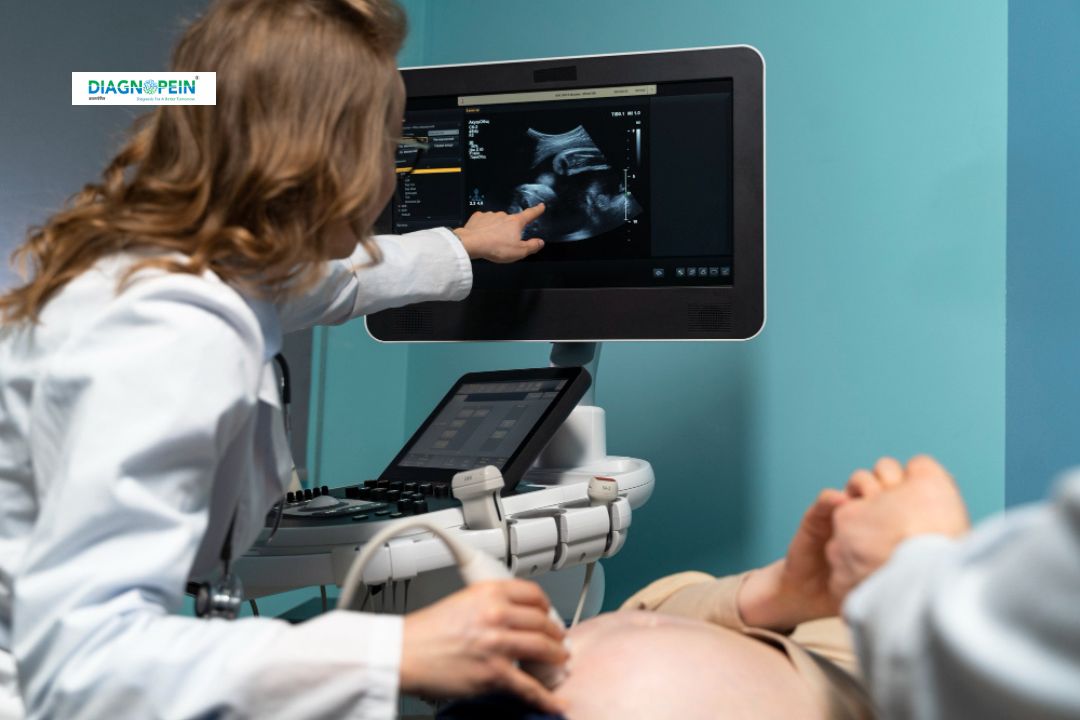Why Choose USG Pelvis TVS?
Performing USG Pelvis TVS in Karad is crucial for early detection and better management of gynecological problems. The test helps doctors diagnose conditions such as uterine fibroids, endometriosis, ovarian cysts, polycystic ovarian syndrome (PCOS), and other structural abnormalities of the uterus or ovaries.
For women planning pregnancy, TVS ultrasound helps in tracking ovulation cycles and monitoring egg development, which plays a key role in fertility treatments and reproductive planning.
Additionally, Transvaginal Ultrasound is often used as a follow-up test to confirm results seen in a regular pelvic scan or to evaluate the position of intrauterine devices (IUDs). The detailed visualization provided by this scan helps in determining the exact cause of symptoms and guides the doctor in prescribing the right treatment.
When is USG Pelvis TVS Recommended?
-
Persistent lower abdominal or pelvic pain
-
Irregular or heavy menstrual periods
-
Infertility or difficulty conceiving
-
Postmenopausal bleeding
-
Pelvic infections or suspected ovarian cysts
-
Follow-up evaluation after gynecological surgery
Benefits of USG Pelvis TVS
USG Pelvis TVS offers several clinical benefits compared to traditional imaging techniques.
-
Provides clear, high-resolution images of uterus and ovaries.
-
Ensures early detection of common gynecological disorders.
-
Helps in monitoring pregnancy and fetal development in the early weeks.
-
Assists in detecting abnormal growths, cysts, or tumors.
-
Guides gynecologists in performing medical procedures with accuracy.
-
Requires no radiation exposure, ensuring safety for reproductive-age women.
The test helps speed up diagnosis, reduces invasive procedures, and provides valuable insights into pelvic health, making it an essential part of women’s diagnostic imaging.
How USG Pelvis TVS Test is Done
The USG Pelvis TVS procedure is quick and comfortable, usually completed within 15–20 minutes. The patient is asked to empty her bladder for clearer results. During the scan, a sterile, covered transducer (a thin, wand-shaped ultrasound probe) is gently inserted into the vagina. The device emits sound waves to capture detailed internal images on a monitor.
A trained sonographer or radiologist performs the scan and interprets the results instantly. Patients can resume normal activities immediately after the procedure, as there is no downtime or recovery period needed. It is a safe, radiation-free, and effective method for real-time pelvic assessment.
Preparation for USG Pelvis TVS
-
Empty your bladder before the test.
-
Wear comfortable clothing.
-
Inform your doctor of any recent surgeries or medical issues.
-
Avoid using vaginal creams or tampons before the scan.
Parameters Evaluated in USG Pelvis TVS
During the Transvaginal Sonography, several clinical parameters are examined to determine reproductive and pelvic health:
-
Uterine size, shape, and endometrial thickness
-
Ovarian volume, follicle count, and cystic structures
-
Tubal abnormalities or presence of fluid (hydrosalpinx)
-
Uterine fibroids or masses
-
Blood flow patterns in the uterus and ovaries using Doppler imaging
-
Structural abnormalities associated with menstrual or fertility disorders
Each parameter helps doctors identify the core causes of gynecological symptoms or infertility, providing a solid foundation for accurate treatment planning.








